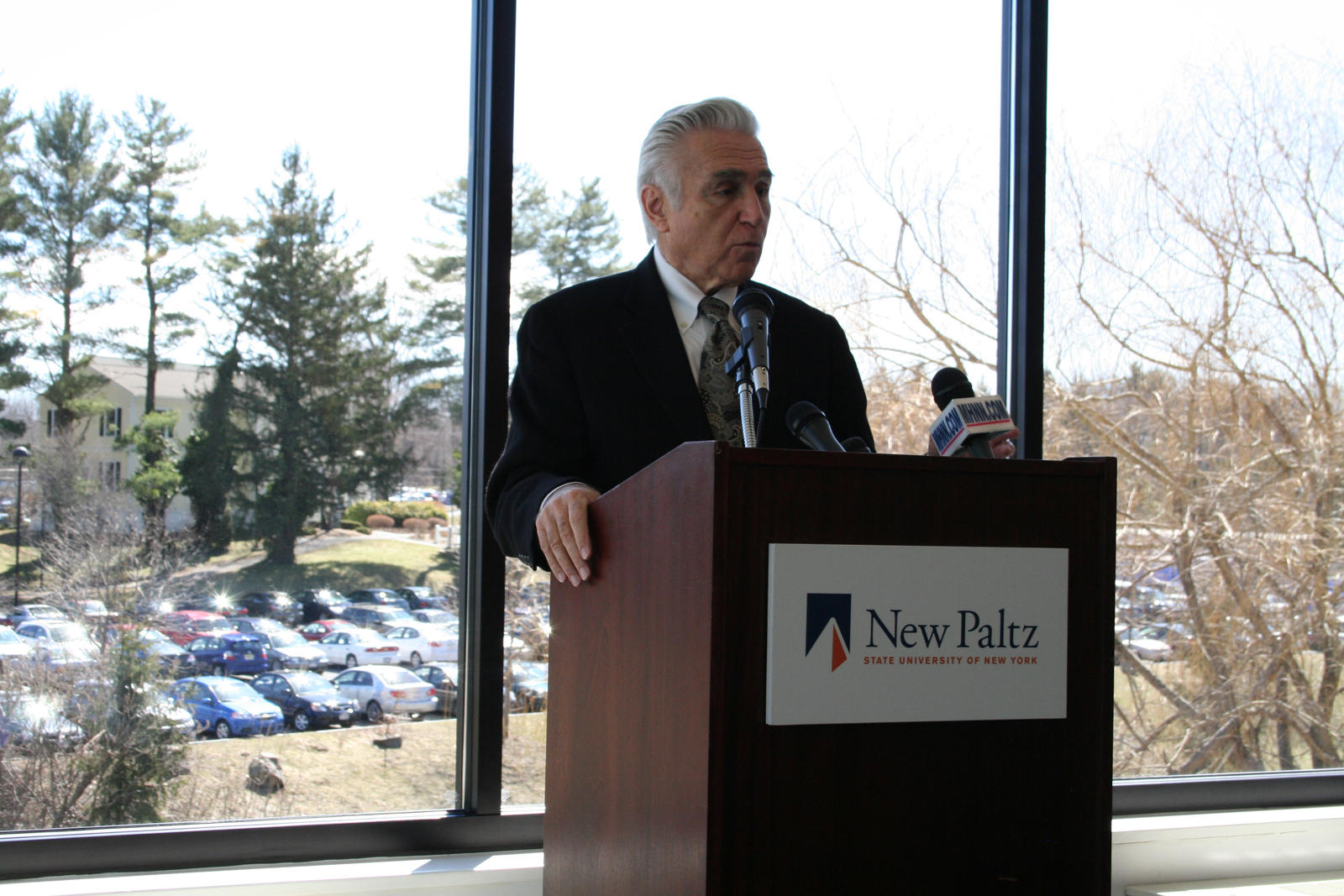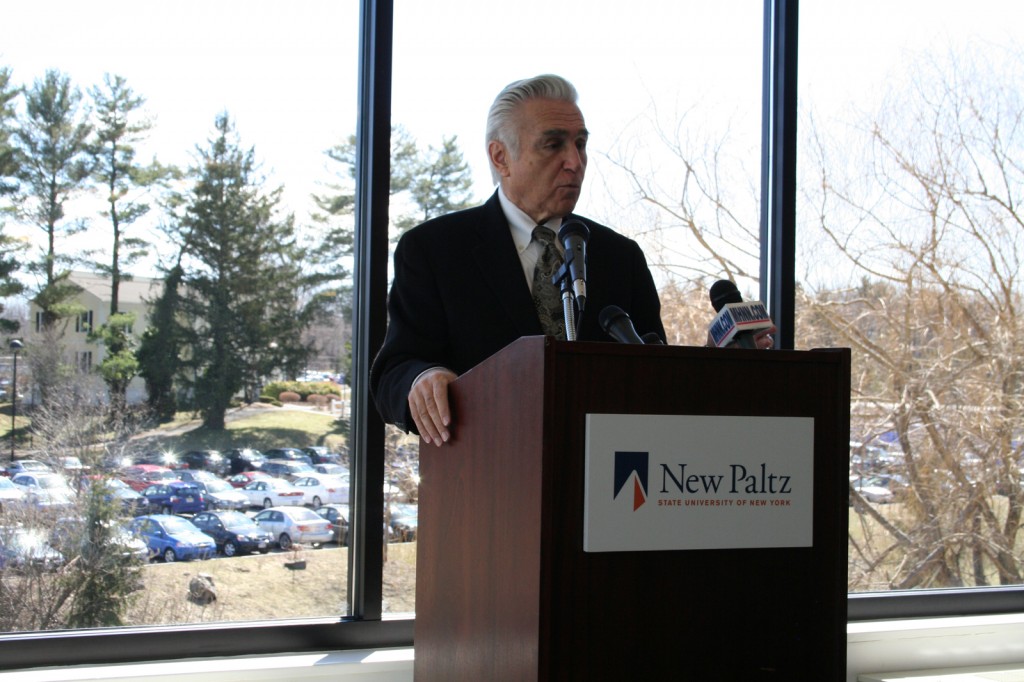

Jada Young, a second-year international relations and Black Studies major, said the burden of paying for college lies on her own back. Coming from a family that “definitely cannot afford to pay out of pocket” for her schooling, Young has been able to attend college thanks to a combination of loans, scholarships and funding from the Federal Pell Grant program.
But as members of Congress continue to discuss legislation that would cut the program by approximately 24.5 percent, Young said she wonders if her brother and sister will be able to pay for higher education.
“I think this proves that the idea of the ‘American dream’ is reserved for certain people and not intended for others,” she said of proposals to reduce the aid program. “These awards are extremely important to me and others who share similar socio-economic backgrounds because they provide us with the chance to become successful in this country.”
Local officials and representatives of the SUNY New Paltz Financial Aid Office said they are advocating against proposals in the Full Year Continuing Appropriations Act of 2011 or H.R. 1 that would reduce funding of the Federal Pell Grant program by $5.7 billion.
Congressman Maurice Hinchey (D-Hurley) said in an appearance at SUNY New Paltz Tuesday that he’ll continue to work to stop the passage of H.R. 1, which he said included the “angering” reduction of educational programs that he said are vital. This includes cuts to the Pell Grant program which was designed to provide need-based grants that do not have to be repaid to low-income students, according to the U.S. Department of Education.
The spending bill proposed by members of the new Republican majority in the House of Representatives calls for a reduction of the maximum Pell Grant award by $845, which Hinchey said would be a “huge mistake.”
“[The] proposal to cut the plan would make affording college more difficult for people who are dependent on this kind of assistance,” he said. “Education is the best investment that we can make as a society and I will continue to fight against these cuts.”
Hinchey said the proposal would affect 14,000 students in his 22nd congressional district who receive this financial aid award and 2,000 at SUNY New Paltz. Daniel Sistarenik, the director of the Financial Aid Office at the college, said SUNY New Paltz students would lose approximately $1.5 million in aid if the bill were passed.
Maureen Lohan-Bremmer, the associate director of the Financial Aid office who oversees eligibility and the ordering of Pell Grant funds, said many of those who receive this type of award at SUNY New Paltz are first generation college students. Approximately 500 students in the Educational Opportunity Program (EOP) on campus also rely on Pell Grants to meet the costs of their bill.
If the “cornerstone” of their financial aid package was cut under federal law, Lohan-Bremmer said she would not want to think that SUNY New Paltz students would have to withdraw from the college because they can no longer pay tuition and other fees.
“It would not surprise me if some students chose a different path to their education such as transferring to a school where they could commute or dropping back to part time status,” she said. “I would hate to see that happen.”
In 2009, Hinchey said the Pell Grant program was expanded under the American Recovery and Reinvestment Act that provided $15 billion in new funding at the time and raised maximum award levels.
Hinchey said the new Republican majority should not seek to undo the progress made in recent years in expanding educational opportunities. Citing expenditures for the Iraq war and the approval of tax cuts for businesses that move manufacturing operations outside of the US, Hinchey said the GOP should stop engaging in wasteful spending practices and start focusing on educational and other internal programs.
“This is just another example of the recklessness of the Republican spending plan,” he said. “They want to keep tax cuts for billionaires and huge subsidies for oil companies – all of those are staying in place. But, they want to cut college aid for students and families in need at a time when tuition costs are rising.”
SUNY New Paltz officials have advocated with Republicans and Democrats alike in support of preserving educational funding like that for the Pell Grant program, Sistarenik said.
With the April 8 deadline for the federal budget approaching in a week, Hinchey said H.R. 1 is in the “negotiation” stages, as the majority in the House of Representatives approved of the bill while facing opposition from the Senate.
Sistarenik said the status of the legislation at this point in the year concerns him because students and their families are beginning to budget for the next academic year.
“I am very concerned with going about telling people how much they are getting and when,” he said. “Timing is very bad and we’re hoping the cuts aren’t as severe as they’ve been proposed.”
Lohan-Bremmer said students and families should stay informed and explore all financial aid options in the meantime. She said students may also have to apply for loan aid, but that this could be “tricky” for low income families who may not be able to afford to make payments even if they are approved for a loan based on their credit history.
In spite of the loans and tax credits that may be available to families, Lohan-Bremmer said there is no direct replacement for the Pell Grant and she worries while students have to wait to find out the future availability of this funding.
“It’s painful to sit on the sidelines and watch this process happen while we know we have parents who are very stressed,” she said. “We wish we could alleviate their stress more, but we just don’t have any answers. We really can’t predict the outcome.”
